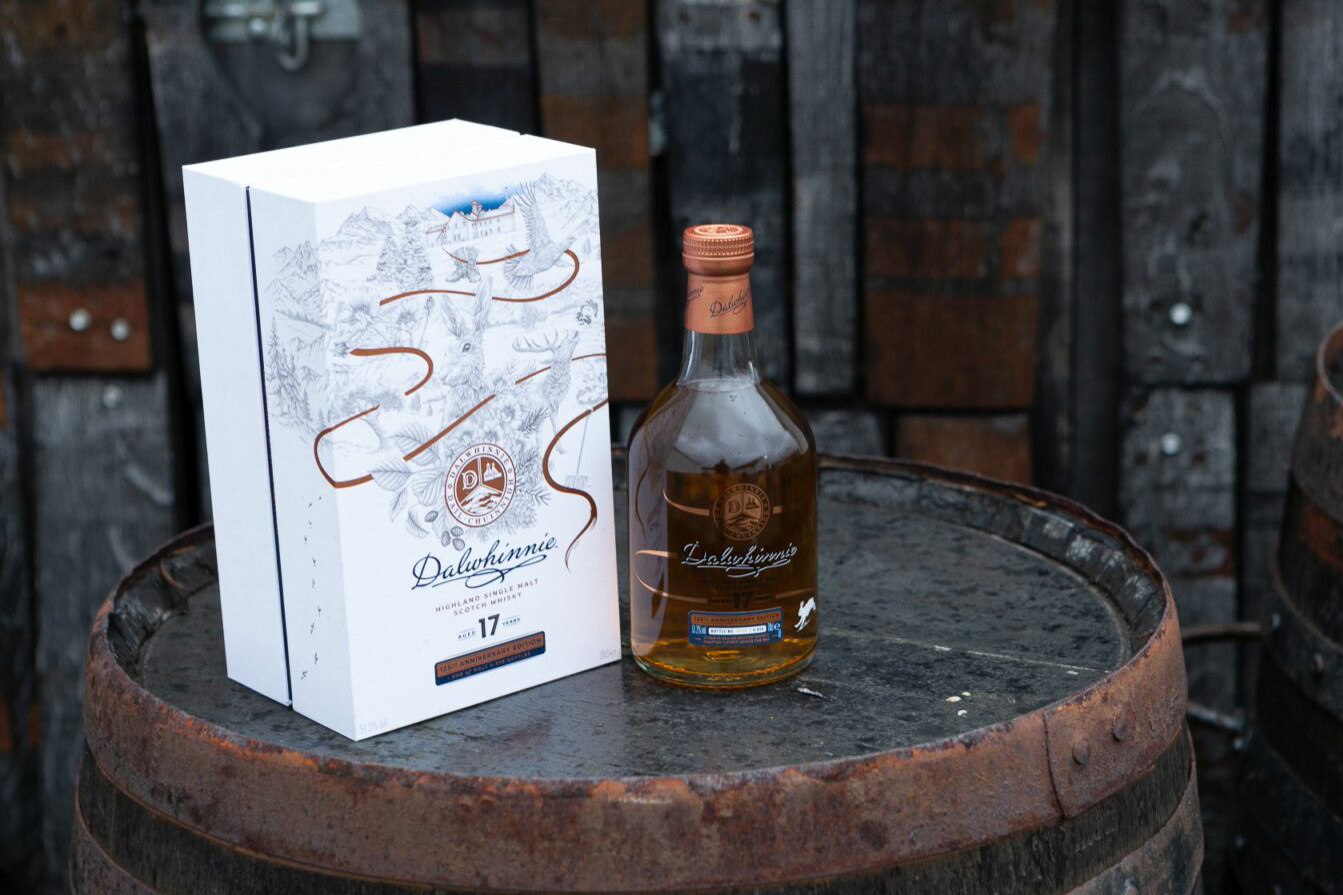Dalwhinnie 17yo - whisky for the 125th anniversary of the distillery

Dalwhinnie Distillery, one of the representatives of the first edition of Classic Malts of Scotland, is celebrating its 125th anniversary this year. birthday. And lest there be any exaggeration in the term "celebrates", Dalwhinnie is releasing a special edition of whisky for the occasion.
Dalwhinnie 17yo 125th Anniversary Edition (51.2% vol.) is a whisky matured in bourbon barrels and subjected to additional maturation (known as wood finish) in heavily fired American oak barrels. According to the producer, these casks give the new whisky more intense than usual notes of apples and vanilla toffee, as well as a long, sweet and spicy finish.
Just under 5,000 bottles have been prepared, each of which will cost the equivalent of £280 at retail.
Before we look under the cork of this particular edition, attention is drawn to the design of the bottle and packaging. It is undoubtedly and at first glance Dalwhinnie - the distinctive shape of the bottle or the exposed logo leave no illusion. However, the cardboard box in which the bottle is packaged is also a kind of diary, a pictorial diary of the distillery's employees. You can find images of animals visiting the distillery - wild rabbits, or deer - but also a shovel for clearing the driveway during winter snowfall.
One of the elements of the distillery's founding anniversary celebration, which includes a new anniversary whiskey, is a series of special birthday tastings. Special tasting sessions are being offered at Dalwhinnie until November 17 this year, during which guests are offered a Dalwhinnie 17yo accompanied by two other drams from the distillery, as part of a birthday tour with a special focus on the distillery's history, evolution and path to its current status as one of the more respected producers of Scotch malt whisky.
As you can easily count, Dalwhinnie was founded in 1898, in the last years of the golden era of Scotch whisky, which ended with the end of the 19th century with the crisis caused by the speculative actions of the Pattison brothers. It is located on a pass, high on the western edge of the Cairngorms mountains, which fully justifies the inclusion of a snow shovel on the package. For many years it was the highest-positioned Scotch whisky maker. It was only dethroned in this category by Braeval (aka Braes of Glenlivet), built and opened in 1972.
The distillery bases its production on just one pair of alembics, which, even with intensive operation, gives it a production potential of about 2 million liters of pure alcohol per year. This places it among distilleries that are relatively small, especially by Diageo's conglomerate standards. Picturesquely located just off the A9, the main road leading from Edinburgh and Glasgow to Inverness and further north, it is one of the region's major tourist attractions. Dalwhinnie retains a typical late 19th century appearance and a malt house with a drying room topped by two pagodas that has been closed since 1968. Against the backdrop of the buildings' pristine white walls, two wooden vats stand out clearly, with copper coils submerged in them to cool the distillate flowing from the alembics. This time-honored type of coolers has survived to this day in only a few Scottish distilleries, replaced by modern and more efficient jacketed coolers. But in these vats and coils, known as worm tubs, lies one of the secrets to the quality of the whiskey produced here.
Dalwhinnie was for many years classified as a distillery included in the Highlands region. As such, it represented the region in the Classic Malts of Scotland set, in which it debuted in 1988. However, when, in the face of the whisky boom and the huge number of newly emerging distilleries, the Scotch Whisky Association saw the need for a precise regional division, Dalwhinnie's situation changed somewhat. The new definition of the Speyside region's boundaries was based on the existing administrative division in Scotland, and according to it, that's where Dalwhinnie was "transferred". Not that it has any dramatic implications - Speyside is part of the Highlands, so referring to the whisky produced there as Speyside single malt and Highland single malt are of equal importance.
As it was said, Dalwhinnie is a relatively small whisky maker, and the dedication of its distillate mainly to blenders means that the market offer of the whisky produced there is clearly narrowed. If we add to this the owner's reluctance to sell barrels to independent distributors, it becomes apparent that apart from the standard Dalwhinnie 15yo, the unaged Winter's Gold and the regular Distiller's Editions, the supply of Dalwhinnie is negligible. This makes the new 17th anniversary edition all the more interesting. Notwithstanding the above, the House of Whisky Online offers the following more than a dozen versions of Dalwhinnie, to which we cordially invite you. Well, and we recommend keeping an eye on the news section - who knows when a new one will appear with us as well Dalwhinnie 17yo.
[08.11.2023 / photo: Diageo]